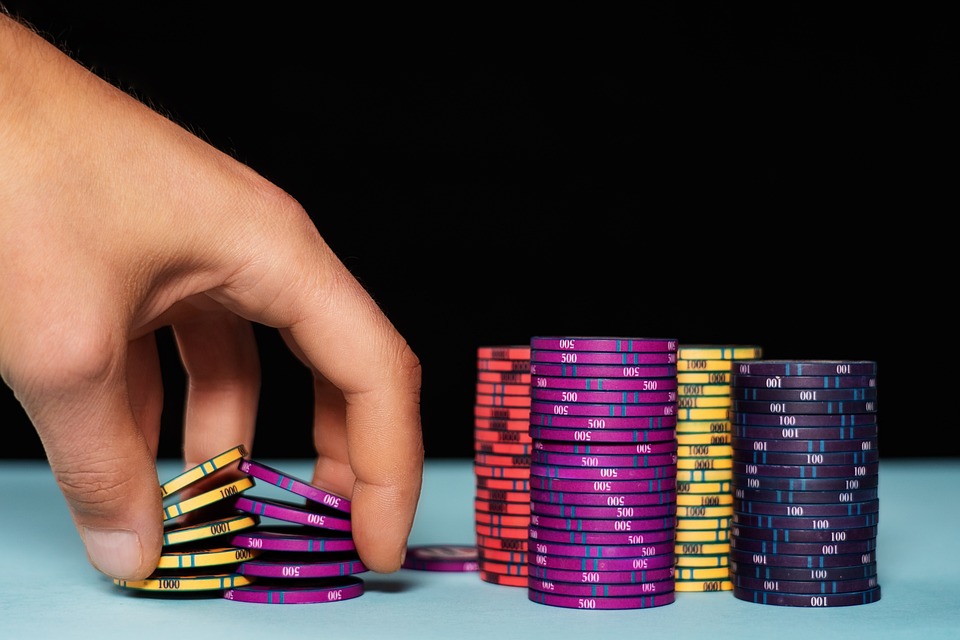Knowing how to play the turn is one of the most important skills a poker player can learn. The turn is when players are presented with many opportunities and options that can make or break their chances in any given hand.
Do you bet the turn or check, hoping to get to the showdown? It’s a difficult decision, but using the best poker strategy will give you an edge over your opponents. This article will examine what factors should be considered when deciding whether to bet or check on the turn.

Photo by Pixabay
Mastering the Turn
Developing proficiency in the third round of betting, also known as the turn, which occurs after the fourth community card is dealt, is crucial for poker players who desire to enhance their chances. Typically, the game’s later stages are more challenging to navigate than the earlier ones.
Additionally, this street is often overlooked and receives less attention than it deserves. More strategies are often dedicated to playing the flop and river well and disregard the turn, considering it to be a mere connection between two more significant rounds.
Despite this, turn strategy is a crucial aspect of any poker hand, as it usually involves deciding whether to commit to the hand. While players may have a decent strategy for the pre-flop and flop, many lack a solid game plan for the turn.
Solid Turn Strategies
If You Have a Strong Hand
To maintain the momentum in a game with a strong hand, consider continuing the action and placing bets if you believe your opponent hasn’t improved their possible draw. It’s too soon to assume your opponent has a better hand than you, so keep placing confident bets and folding if the odds aren’t in your favor.
However, if your opponent raises your bet, you must reevaluate your hand’s strength and decide whether to fold. Typically, players don’t raise bets on the turn unless they have a strong hand.

Photo by Pixabay
Use Continuation Betting or C-Bet
It’s important to note that the turn often brings closer equities. Therefore, a polarized betting strategy is typically used, where strong hands and draws are bet for value, weaker hands are bet as bluffs, and middling hands are discarded.
When deciding to c-bet on the turn, consider how the turn card affects your and your opponent’s range of hands. The type of turn card can strongly influence the decision on what kinds of hands to bet with.
For example, an overcard or a card that completes a draw can significantly impact the outcome of the hand. Conversely, if the turn card is blank, it’s usually safe to continue with the same strategy that was decided upon during the flop.
A Scare Card Appears on the Board
Scare cards can be frightening, as they can cause uncertainty about who is in the lead and make one feel uneasy. It is essential to remain calm and think logically about the situation.
After revealing a scare card, consider whether or not it benefits one’s opponent and if it fits into their betting strategy. For example, if an Ace appears on the turn and one’s opponent had previously raised aggressively, they may be holding an Ace.
If you lead after the flop, you aim to minimize the pot size by checking or calling sensible bets. If faced with a substantial bet, you might need to consider folding if you suspect you’re defeated.
If your adversary leads after the flop, they may also be apprehensive about the scare card. As a result, you can regain the lead and compel your opponent to exit the pot by being assertive.

Photo by Pixabay
Checking the Turn
There are certain situations where checking is preferable. If you are in a position where you have incomplete information, such as being out of position, checking is generally more advisable than betting. Additionally, checking can protect you from being raised off your equity if your hand is not strongly polarized.
For example, if you hold a pair of tens and an overcard comes up on the turn, you may want to realize your hand’s showdown value, but there is a risk that your opponent could have the overcard in their range. If you bet and are subsequently raised, you would be in a difficult position and likely have to fold. However, if you choose to check and your opponent raises, you can still call the raise.
In summary, checking on the turn is the best poker strategy for hands that are not strong enough to call a raise but still have decent equity.
Call With Mediocre Hands
If you called in the early rounds with a middle pair of hands, your intention was likely to observe your opponent’s actions in the next round. If your opponent continues to exhibit strength, it would be wise to fold your hand.
Conversely, you should consider betting if your opponent checks and seems vulnerable. Your opponent may have been initially bluffing with a continuation bet but changed their approach after you called, leaving you in a favorable position to win the pot. This strategy, commonly known as a “float play,” can be used as a bluff with any two cards to deceive those who bet solely on continuation.
Factors to Consider When Deciding Whether to Bet or Check on the Turn
Several factors should be considered when deciding whether to bet or check on the turn. The first and most important factor is the strength of your hand. If you have a strong hand, it may make sense to value bet poker and extract as much value as possible from your opponents.
On the other hand, if your hand is weak, it may be better to check and hope that your opponents will also check behind, and you can reach the showdown without committing too many chips.
The second factor is the number of opponents in the pot. If only a few other players are in the pot, betting or raising could be an excellent way to narrow the field. Conversely, checking may be a better option if many poker players are involved because someone likely has a strong hand.
Conclusion
It is clear that playing the turn can be difficult and requires careful consideration of many factors before employing different poker tactics. However, with practice and experience, it is possible to make better decisions on the turn more often than not. By taking into account your hand strength, understanding pot odds, and being aware of how opponents are likely to react to bets or raises, you will have a much greater chance of seeing the showdown, winning the pot, or avoiding losing all your chips.





